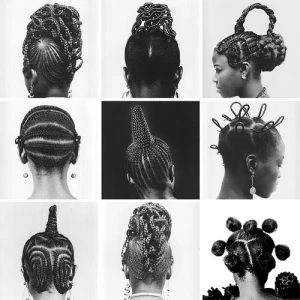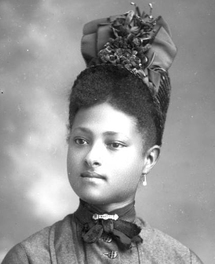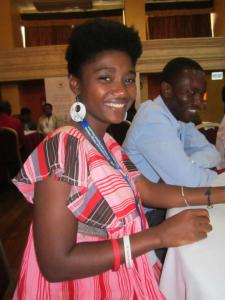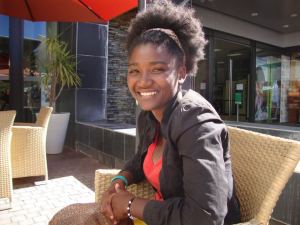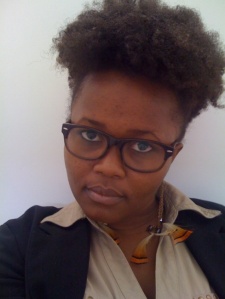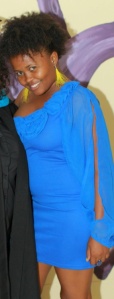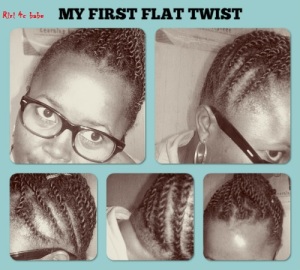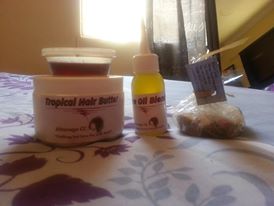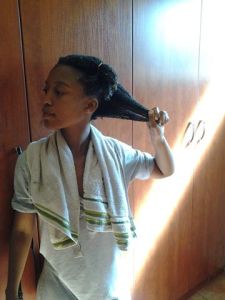So I did a bit of digging into hairstyles, how they came to be, how they have changed over time, and the different influences through history. This piece scans over some of the finds that stood out for me during my dig. These nuggets of interesting finds are generally themed around how black African women came to lose the “original” African hairstyles.
Way, way, back In the 1400’s Europeans traded with African people adorned with elaborate hairstyles; these were locks, plaits, twists, Zulu knots, braids, Nubian knots and dreadlocks, amongst a plethora of others. Hair was highly symbolic and often carried cultural and spiritual meaning. Today, some of these hairstyles can be seen on the streets, while others have sadly dwindled away and have been replaced by styles with rich Western influence.
Looking at images and reading through stories of the relationship between women and their hair was so intriguingly beautiful. I couldn’t help but be overcome with a sense of nostalgia with the century old black and white images of mom and daughter seated in the all too familiar plaiting stance, skillfully laying rows of plaits against her scalp. At the age of seven I too took this position every Sunday while my mother plaited my hair to get me school ready.
In the past, the woman who used to meticulously craft her hair sadly became the slave who had to cover her hair with a headscarf or handkerchief; wear a wig, or style her hair to look more like her masters. The reasoning behind covering the slave’s head was supported by the notion that the nature of the slave’s hair might offend other slave masters.
 African language, culture and grooming traditions began to disappear in the 1600’s when the first slaves were taken to Jamestown. At this time women relied on bacon grease, butter and kerosene as hair conditioners and cleaners. By the 1700s slave owners started calling slave hair woolen. Slave owners would often tell slave children to call their hair wool, the kids were also encouraged to dislike the original state of their hair. Evidently this conditioning is rooted in the depth of our pasts. Today there is an overwhelming aspiration towards the imagery that floods our daily existence.
African language, culture and grooming traditions began to disappear in the 1600’s when the first slaves were taken to Jamestown. At this time women relied on bacon grease, butter and kerosene as hair conditioners and cleaners. By the 1700s slave owners started calling slave hair woolen. Slave owners would often tell slave children to call their hair wool, the kids were also encouraged to dislike the original state of their hair. Evidently this conditioning is rooted in the depth of our pasts. Today there is an overwhelming aspiration towards the imagery that floods our daily existence.
Hair is just one aspect of the debate that black women grapple with today. Skin tone and hair are hand in hand in the struggle of the African women today. Black people with darker skin and kinkier hair were seen as generally less attractive and of a lesser value. Sadly this is a reality we are confronted with every day. Back then the lighter skinned straight – haired slaves commanded a higher price at the slave auctions than the dark skinned slaves with kinkier hair. Today the light skinned and the silky haired remain a benchmark for the bulk of black women.
By the time slavery was abolished, the damage was done. Black women with similar hair to their white counterparts were seen as “well adjusted”. The nature of one’s hair was key; it determined whether you were given access to school, churches, groups and business networks. There has been little chance to celebrate our hair the way we would have liked to. I for one have not till recently come to be in a meaningful relationship with my hair. I am finding small moments to celebrate ALL that is my natural hair. By learning, exploring and experimenting with what was once just me sitting for a really long time with my head hung down while the hair dresser meticulously attaches fibre to the roots of my hair, I now see as a part of a greater hair journey.
With the likes of Lupita gaining global precedence for being dark skinned and kinky haired, the fact still remains that we are still nursing this mental hangover acquired in the 1800’s. We need to set our own standards. Whatever the reason may be for your preference in cosmetic aesthetics I think gaining context of “what has been” to frame your “what is” will put our “What is to come” in a great position for reconnection, direction and growth as we uncover our personal hair journeys.
Elina
(Oranjemund born Elina Nambala; @Crownedpearl currently serves as a strategist for ad agency 34 in Johannesburg, with an academic background in Political Science and more recently brand leadership. Moreover @Crownedpearl is an avid life lover, an appreciator of all things art, an old young soul, living, learning and growing).
(All pictures of hairstyles taken from Internet sources, Wikipedia)

